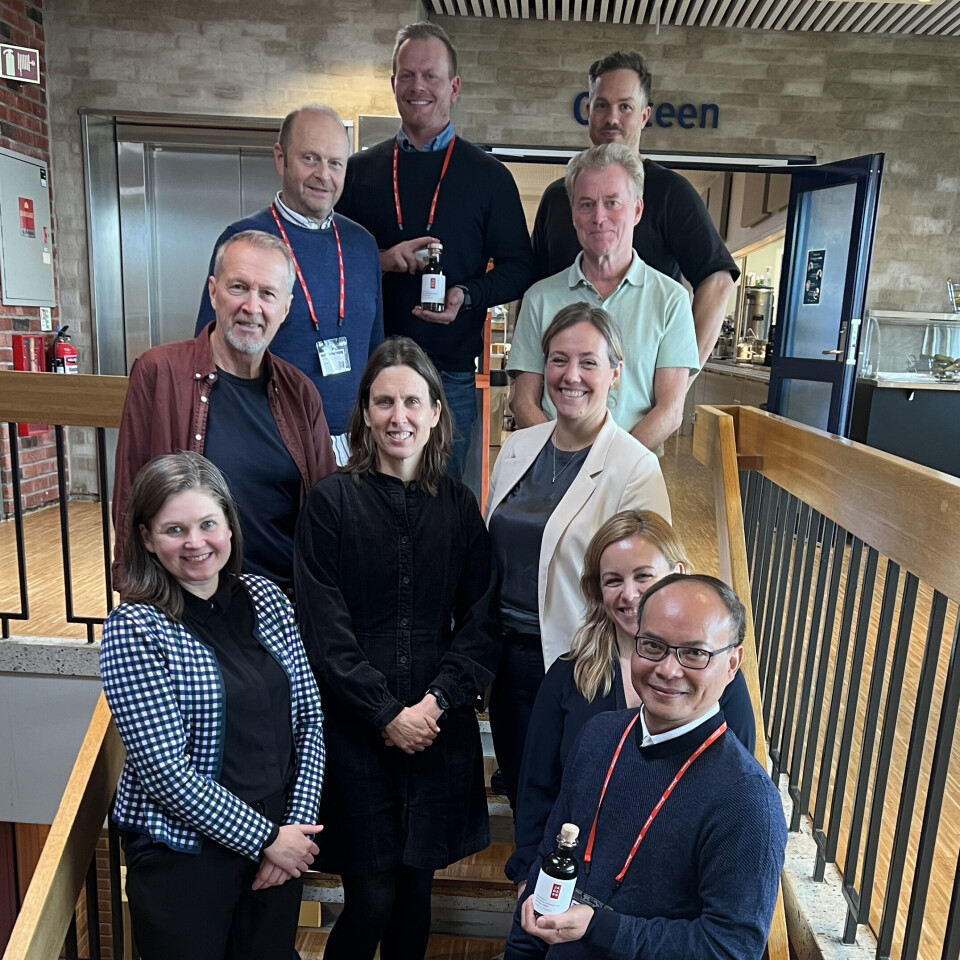THIS CONTENT IS BROUGHT TO YOU BY Nofima The Norwegian Institute of Food, Fisheries and Aquaculture Research - read more

Norwegian fish sauce: A new taste experience from the sea
Researchers have developed methods to produce high-quality fish sauce from species such as blue whiting and herring offcuts. This opens new possibilities in food production.
“We have now documented that Norwegian raw materials and residual raw materials are well-suited for fish sauce production, and how we can develop interesting aromas and flavours through the fermentation process,” says researcher Mari Øvrum Gaarder at Nofima. She has led the research work.
Residual materials are what remain after the edible parts of the fish have been used in food production. These are often leftovers such as bones, membranes, and entrails.
High protein yield, sought-after flavour and aroma
The fish sauce meets international quality standards and offers exciting taste experiences with a complex flavour profile, says Trung Van Nguyen. He is the founder of Noumami, the producer of the sauce.
The fish sauce was fermented for ten months. It consisted of either blue whiting or herring residual raw materials.
The fermentation resulted in a protein content of almost 50 per cent. It also contributed to the sauce's characteristic taste and aroma.
Among the desirable flavour and aroma characteristics are umami, fermented notes, and roasted aroma.

Finalist in Norwegian food competition
Noumami's fish sauce Jadarr, made from wild-caught herring, is already on the market. It has been well-received, including being a finalist in the Det norske måltid (The Norwegian Meal) 2025 competition.
In the Fish Sauce project, cookbook author and food influencer Elisabeth Le from Alt Asiatisk participated to test two different sauces. She is impressed with both versions after trying them in both hot and cold dishes.
“Both sauces are slightly saltier than what I'm used to, yet I'm truly impressed by both the taste and aroma. The variant that reached the finals in Det norske måltid is my favourite,” she says.
Trung Van Nguyen explains why the sauces might taste saltier:
“We use sea salt in our fish sauce, which provides a more prominent salt taste compared to regular table salt. This is why our fish sauce might be perceived as saltier, even though the salt concentration is similar to other fish sauces.”
Great potential
The project opens new possibilities for utilising fish and residual materials from the fishing industry. This can contribute to increased value creation and more sustainable resource use in Norwegian fisheries.
“Fish sauce is a product with great potential in the global food market. The fact that we can now produce this at high quality from Norwegian raw materials is very promising,” says Nguyen.
He adds that traditional fish sauce is created through a time-consuming fermentation process, which gives it a sharper saltiness and a deeper umami aftertaste compared to other varieties.
From fish and fish offcuts to sauce
The researchers used blue whiting and herring residual raw materials, which were mixed with salt, red mould bacteria, and enzymes.
The mixture was then fermented in large tanks for up to ten months.
During fermentation, samples were analysed for chemical composition, aromatic compounds, and sensory properties.
“The fermentation process is crucial for the final product's quality. We have succeeded in optimising this process for Norwegian raw materials and by-products,” explains researcher Tone Aspevik at Nofima.
The road ahead
Now, Nofima researchers and businesses are working to fine-tune the production process. THey are also exploring various applications for the product.
“We see great potential for Norwegian fish sauce in both domestic and international food markets. The global fish sauce market is estimated to exceed 15 billion dollars. This could become an exciting new product from the Norwegian fishing industry,” says Gaarder.

This content is paid for and presented by Nofima The Norwegian Institute of Food, Fisheries and Aquaculture Research
This content is created by Nofima's communication staff, who use this platform to communicate science and share results from research with the public. Nofima is one of more than 80 owners of ScienceNorway.no. Read more here.
More content from Nofima:
-
Red algae grown in wastewater from fish-farming facilities could become sustainable salmon feed
-
Pumpkins are good for more than just Halloween decorations
-
This is how temperature affects a salmon's health and growth
-
Study: Omega-3 and zinc is a powerful duo for salmon
-
Fish may turn yellow if frozen too fresh
-
Is it better if food is packaged in plastic or paperboard?





































